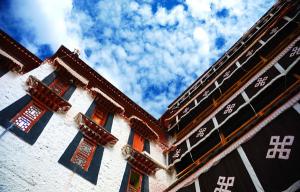Tourism Creates Jobs for about 100,000 Tibetan Farmers and Herdsmen
According to the working conference on tourism of Tibet held on Feb. 26, there have been over 97,000 farmers and herders in southwest China’s Tibet Autonomous Region engaged in tourist reception so far.
Last year, the revenue from tourist reception hit one billion yuan (153 million U.S. dollars), with a per-capita increase of 10,300 yuan (1,574.9 U.S. dollars). Tourism has become an important channel for farmers and herdsmen to get rich.
The Lulang Town with an immense forest in Nyingchi City is known as the “little Switzerland of Tibet”. Palbar, a villager of Tashigang Village in Lulang rents tents and sell special local products to tourists around the scenic spots in slack season. He can earn over 20,000 yuan (3,058 U.S. dollars) just from this business yearly.
Nowadays, there are increasing farmers and herders involved in tourism in Tibet. Making use of the exceptional natural advantages of mountain, lake and glacier, large numbers of villagers living around the Ra'og Lake in east Tibet, have run Tibetan family hostels, deeply favored by tourists. The family hostels also appear like mushrooms after rain in Nyingchi City, totaling over 200, able to accommodate some 10,000 guests.
The Tourism Development Committee of Tibet reveals that the tourism departments at various levels have vigorously developed village tourist products such as farmhouse and Tibetan family hostels, enabling farmers and herders to increase their incomes in this regard. They also actively provide tourism service training for farmers and herdsmen and strengthen the construction of the public service facilities and the supporting facilities for tourism in an attempt to improve the living environment of farmers and herders.
Tibet’s tourism has realized the transformation from a general economic industry to a pillar industry. The tourism revenue in the whole region amounted to 28.1 billion yuan (4.29 billion U.S. dollars) last year, accounting for over 20 percent of the region’s GDP.














